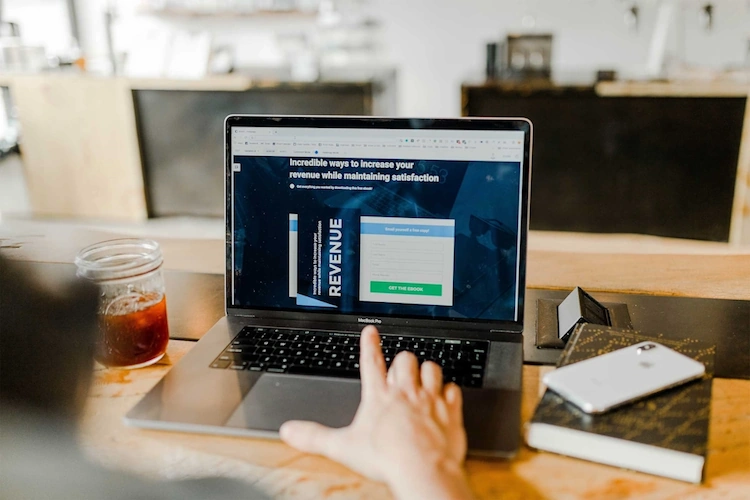Here is the hard truth: Charisma in real life does NOT translate to YouTube.
When the camera’s red record light comes on, I’ve seen confident, eloquent business owners suddenly shrink, shrivel and turn very awkward.
Performing to the camera is by definition unnatural. It lacks the “encouragement” that comes from an organic feedback loop that only exists with an in-person conversation – body language, expressive sound cues, natural questioning, etc.
Unable to sense the engagement of the listener, “actors” become unsettled, insecure, lose their train of thought, sense of pace and it very quickly falls apart.
As someone who has recorded hundreds of talking heads, here are some tips for business owners hoping to step into the digital limelight.
YouTube Tip #1: Picture Your Audience – Literally
The first step is try to recreate a natural conversation by “seeing” your audience instead of the camera.
I encourage my clients to take the time to build a complete and specific mental picture. It is helpful to reflect on some of their most common characteristics. Some useful questions could be:
- who needs this video the most?
- what is the median age of this audience?
- what is the predominant gender of this audience?
- why do they need this video?
- what is their emotional state when you are talking to them about this subject?
- what are the common misconceptions that need to be addressed on this subject?
- how formal / casual are you usually with this audience?
With a clear mental picture of your audience standing right in front of you, your entire delivery will inevitably change. Your tone becomes more human, your stance adjusts and your entire disposition and delivery will be transformed.
Admittedly, relying 100% on imagination for a mental picture can be a challenge. Here, I recommend sticking a photograph of your ideal client (even a stock image approximation) right next to the camera lens. The larger the better – being able to make eye-contact while recording makes a big difference.
This simple tip alone can go a long way in helping you relax in front of the camera and humanise your performance.
Charisma in real life does NOT translate to YouTube.
YouTube Tip#2: Focus on a Specific Question
Any given subject can be attached from multiple angles. The danger with experts is that they have the ability to drone on for hours on a particular topic.
But YouTube is not the space for a comprehensive and definitive video on a topic. That’s what Netflix documentaries are for. On YouTube, audiences don’t want to sift through 60-minutes of content to find the one thing they are looking for.
I encourage my clients to make videos that speak to a particular question their audience has.
For example, it is less helpful to make a general video about ladders. Instead, consider a specific question that you want to answer around ladders: how to pick the right type of ladder? how to ensure ladder safety in public spaces? how to maintain your ladder? etc.
Besides keeping you focused and on-point, you are more likely to be ranking better on search results pages if your title is specific. You know you can’t afford to be boring, but having a specific question is just part one of the solution. How do you deliver on that promise in the video itself?
YouTube Tip #3: Prepare a Script Flow Guide
On YouTube you are competing with a dozen frames peppered all around the browser window. You will want to be clear, concise and not lose your audience with a convoluted train of thought.
Having a full-blown script helps, but can often be stifling and inhibit a natural, conversational flow.
Instead, my recommendation is to have a flow guide. A flow guide is more than just dot points. It is an exercise in identifying the main points and then connecting them in a way that is seamless. The idea is to take the customer on a smooth journey.
A flow could look like this:
- Welcome – ultra-short, using the same language as you usually would in-person (2 seconds)
- Relatable Aspiration & Problem Statement – “I know how frustrating it can be when you want… but…” (5s)
- Restate the Topic – “so today I want to share with you…” (3s)
- Main Point #1
- Main Point #2
- Main Point #3
- Example – important to rise above the theory / ideas and provide practical examples along the way
- Supporting Materials / Caveat – “there are always exceptions to this…” – recognising the complexity of the subject matter helps audiences appreciate that there is more value ahead from your brand.
- What’s Next – while you have given them valuable knowledge, problems are always more complex than the simple video suggests. Pointing the audience to the next step is both helpful and gently reinforces the idea that the service your business offers will help close any further gaps.
- Assurance – words of encouragement help your audience feel empowered to adopt your strategies / recommendations and solve their problem
- Call To Action – more on this in a future post
Whether the flow guide is then placed on cue cards next to the camera or a sheet of paper on your desk as you record, having readily available dot points organised in a flow will allow you to 1) stay on point, 2) maintain eye contact with the “picture” and 3) keep the delivery natural.
However, getting the words right is only 20% of the communication process…
YouTube Tip #4: Get Comfortable, Get Moving
80% of communication is non verbal, yet so many (new) YouTube presenters appear stiff and stuffy.
To help my clients loosen up and get the body language communicating with confidence and assurance, this is what I get them to do:
- dress comfortably – was it a young Robert DeNiro that used to wear his best silk underwear when auditioning because it gave him a confidence boost?
- smell amazing – wearing that special aftershave will boost your confidence
- get the room temperature right – sitting in the sun or letting a cold draught in will unsettle you – every little bit of help counts
- have the camera at eye level – having to look up to the camera subtly disempowers the speaker
- invite a cheerleader – in absence of a director, having an honest, encouraging presence in the room makes a big difference
It is so important to mention here that getting comfortable on screen is a lifelong pursuit. It’s tough. Even the best actors suffer insecurity and need to be supported.
You’re going to get better and better at it. But no matter how experienced you are, you’re going to look back at your videos and cringe – sometimes directly after they are published!
But if there is one take-home message I have for budding YouTube stars it’s this: keep at it!! 🙂



